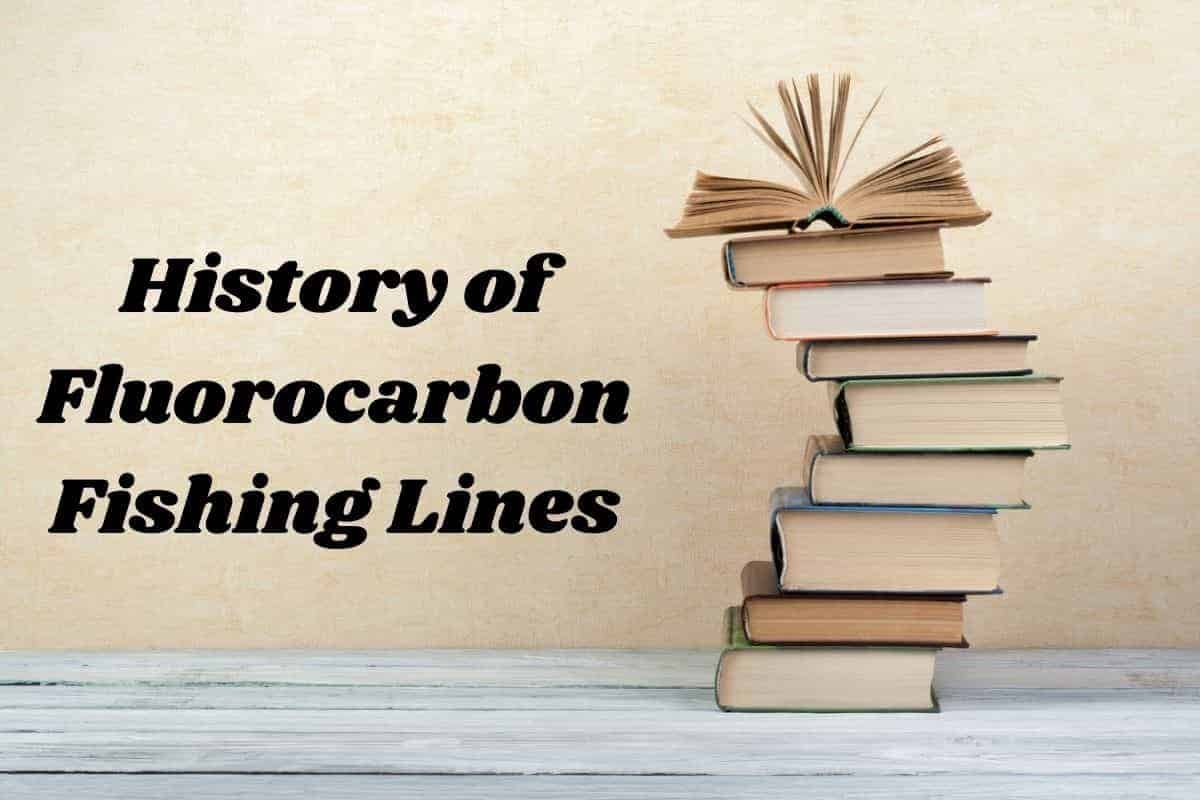Fluorocarbon fishing lines have been around longer than you may think. These lines have been developed and extensively improved on since they were first launched. But have you ever wondered what is the history behind fluorocarbon lines and how they came to be?
The very first fluorocarbon fishing line was invented in 1971 by Seaguar’s scientists. This first generation of fluorocarbon fishing lines offered many new benefits that anglers had never had before. But it did come with many drawbacks, which were improved on over the years.
Fluorocarbon fishing lines are a favourite among anglers for many reasons. Like most things, there is a lot of history behind this type of fishing line.

Fluorocarbon Fishing Line Timeline
1970 – 1971
Dr. Heijji Kawai discovered a new type of material under the family of plastics named polyvinylidene fluoride (PVDF) in 1970 while working for Kureha, a Japanese company.
In 1971, the discovery of PVDF led to the production of the first fluorocarbon leader named “Seaguar.” Seaguar was mainly used as saltwater fishing leaders during this time.
1977 – 1984
In 1977, a Japanese company named Sunline was founded.
In 1981, Sunline created the first resin-coated using fluorine compounds waterproof fishing line called Kyokurin Hard.
In 1984, another product from Sunline was introduced called Powerd. This new fishing line was the first to state the knot strength and diameter of the fluorocarbon fishing lines.
1993
Sunline introduced Tornado, which was their first fluorocarbon leader, in 1993. The launching of Tornado helped establish the company’s reputation for high-quality fluorocarbon products.
1999
Sunline went on to introduce another new Fluorocarbon leader called V Hard. Although it has been several years since V Hard was released, it is still a well-loved leader that many anglers use.
The 2000s
Fluorocarbon lines grew by leaps and bounds during the 2000s. Many new products were released, such as Shooter, FC100, FC Sniper, etc.
There is no doubt that fluorocarbon started getting recognized for its benefits, especially as Sunline kept producing a steady stream of products for saltwater and freshwater industries.
2014
With new technology on the rise, it was only a matter of time before Sunline would release a new product using new technology. Sunline released its first P-Ion-processed product in 2014. The P-Ion technology, which was patented globally and is now known as Plasma Rise, was developed in collaboration with the Tokyo Institute of Technology.
Sunline fluorocarbon lines came increasingly abrasion-resistant, making it possible for anglers to have longer casts. The molecular process that was developed over 5 years ago ensured that fluoro became even better in terms of performance, casting, and strength.
What Was Used As Fishing Line Before Fluorocarbon?
Fishing lines have been around for centuries. The earliest known type of fishing is braided lines. However, they weren’t made up of the same material that we know of today. The history of braided fishing lines can extend as far back as biblical times.
The history of monofilament fishing lines is much more recent, starting in the 1930s. The invention of mono and its manufacturing method paved the way for the invention and manufacturing of fluorocarbon fishing lines in the 1970s.
Leading Up To The Invention Of The First Fluorocarbon Line.
After Dr. Heijji Kawai discovered PVDF, he started studying the material and found that it’s practically invisible underwater, abrasion-resistant, and is resistant to UV degradation. These PVDF properties are way more superior to monofilament.
Since Dr. Kawai was an avid angler and knew all too well about monofilament’s shortcomings. Dr. Kawai eventually discovered that PVDF could have been made into a fishing line by using the monofilament manufacturing process.
An importer in South Florida imported these Japanese fishing lines and sold them in America. Kureha launched the fluorocarbon fishing lines into the US market around 2000-2001 as Seaguar fluorocarbon fishing line.
Seaguar is the only company that produces the raw material of polyvinylidene fluoride. It can design it exclusively for fishing lines. Other companies have to purchase fluorocarbon resin and extrude the raw material themselves.
The First Fluorocarbon Line Used For Fishing Application.
Fluorocarbon lines started becoming all the rage and were used heavily for saltwater fishing in the 1980s. Bass anglers started using fluorocarbon as their main fishing line in the 1990s. This was when anglers realized the benefits of fluorocarbon fishing lines.
Was Fluorocarbon Competing Against Another Fishing Line?
Although fluorocarbon fishing lines became more popular due to their characteristics, they still had braided lines to compete with.
A Japanese company, Toyobo, and a Dutch company called DSM successfully produced a new high-density polyethylene filament, which is still being used today for braided fishing lines.
Sunline produced and launched their first braided fishing line, called Deep One, in 1992.
Fluorocarbon Development In Recent Years.
One of the recent major developments in fluorocarbon is the new release of fluorocarbon line by AFTCO.
Saiko Fluorocarbon Fishing Line, released in 2019, is a new fluorocarbon line that provides additional benefits to the fluorocarbon lines already in the market. AFTCO has been the industry leader in fluorocarbon leader fishing lines since the launch of Saiko
Saiko not only has all of the qualities that make fluoro superior to mono, but it also has better abrasion resistance than other fluorocarbons currently in the industry. It is well known that all fluorocarbon fishing lines are made to be abrasion-resistant. It is also a fact that the line will encounter something hard or sharp somewhere along the line.
The true test is observing how the fluorocarbon fishing line performs post being weakened. Saiko distinguishes itself from other fluoro lines as it is more durable and stronger after abrasions. Normally lines weaken, but that is not the case for this new release.
Happy Fishing and Tight Lines
